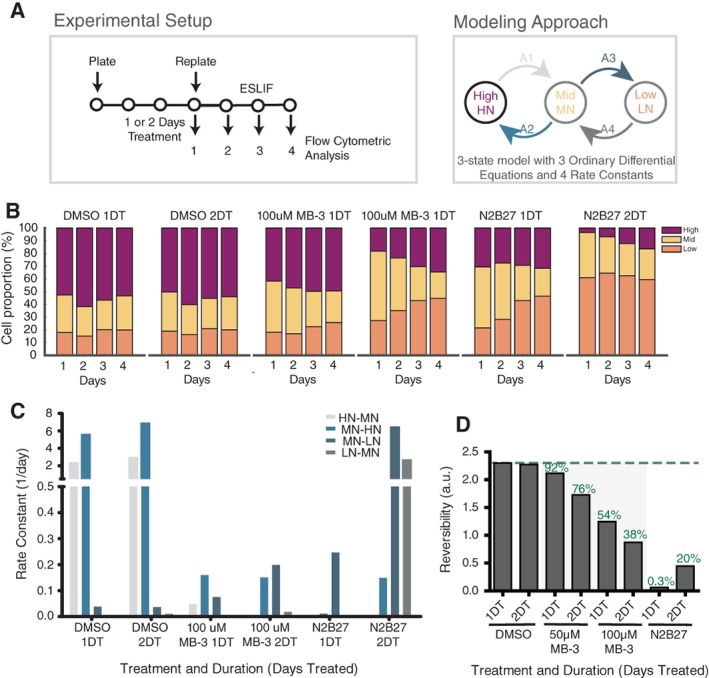Figure 5.

Inhibition of Kat2a catalytic activity affects reversibility of commitment decisions in TNGA mouse embryonic stem cells. (A): Experimental design of wash‐off experiments (left) and modeling approach (right). TNGA cells were cultured for 1–2 days in ESLIF medium with MB‐3 (50 or 100 μM) or DMSO, or in N2B27 differentiation medium. Cells were washed off the treatment, and cultured for up to 3 days in ESLIF, with daily monitoring of Nanog‐GFP profile. Four independent biological replicas were performed for accurate model fitting. A model was constructed using the proportion of cells in each of the three HN, MN, and LN states with four kinetic parameters (A1‐4; see Supporting Information Methods). (B): Proportion of cells assigned to each state (HN, MN, or LN) on each day of the protocol, per treatment. (C): Kinetic modeling of transition rates between HN, MN, and LN states in response to transient exposure to MB‐3 (DMSO or N2B27, controls). HN‐to‐MN represents exit from pluripotency/commitment to differentiate; MN‐to‐LN represents differentiation; reversibility of either decision is given by the reverse transition probability. (D): Reversibility indices (MN‐to‐HN + LN‐to‐MN)/(HN‐to‐MN + MN‐to‐LN) for different doses and durations of treatment. Green text indicates equivalent percentage of DMSO treatment. Abbreviations: DMSO, dimethyl sulfoxide; DT, days treatment; GFP, green fluorescent protein; HN, high Nanog‐GFP; MN, mid Nanog‐GFP; LN, low Nanog‐GFP.
